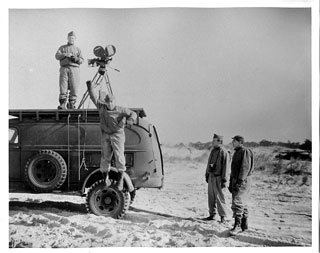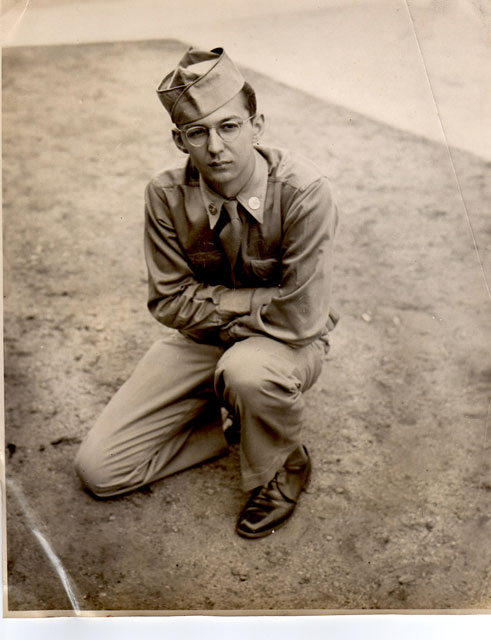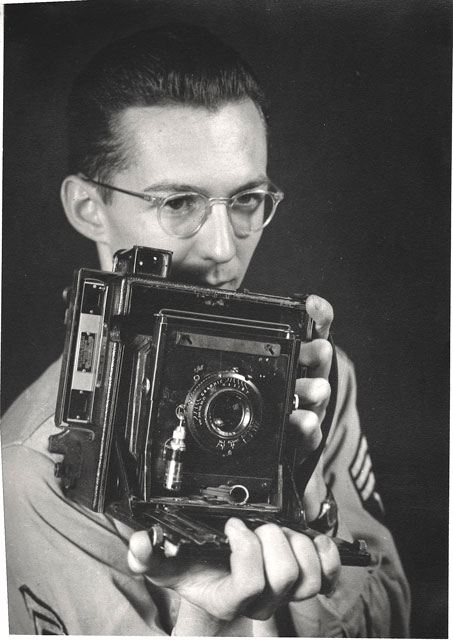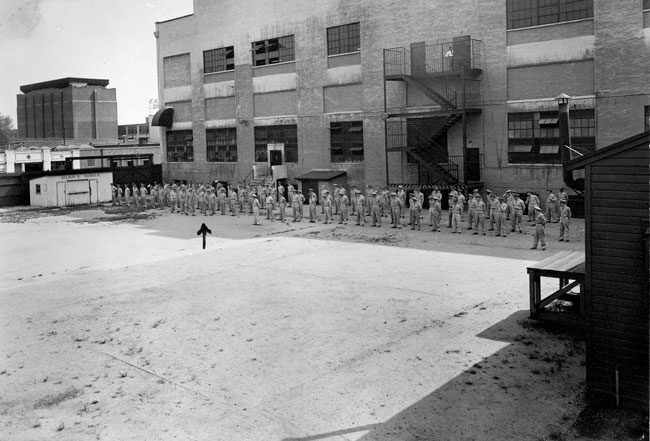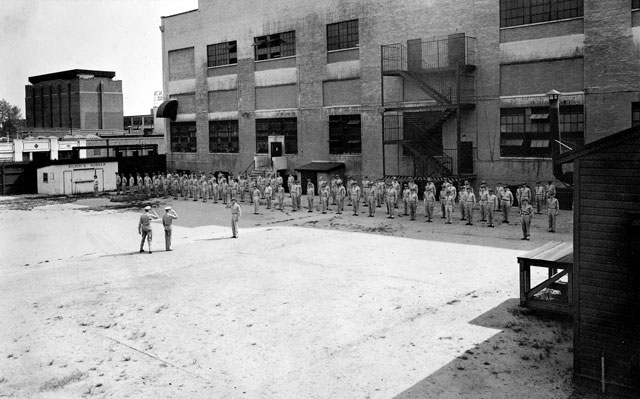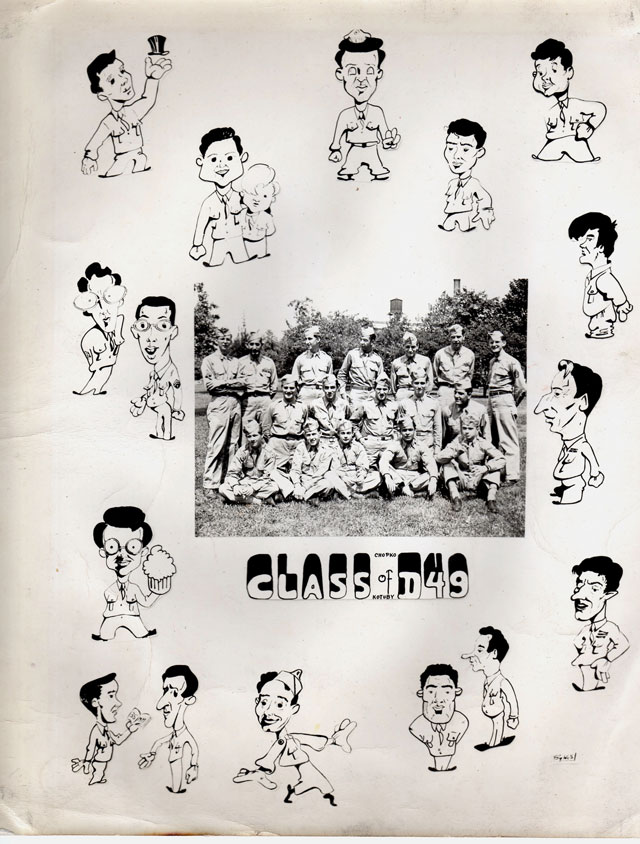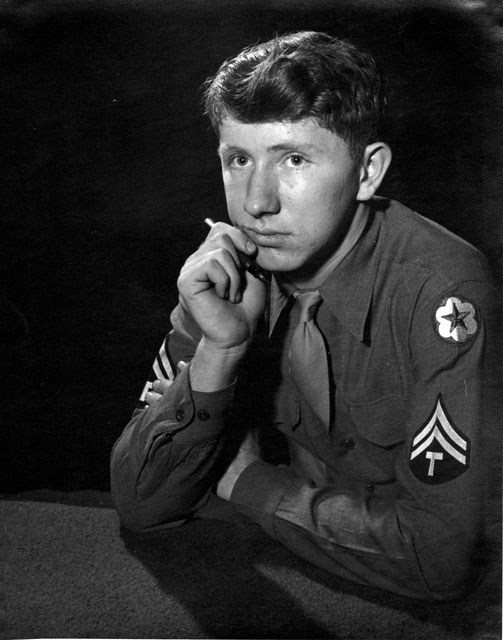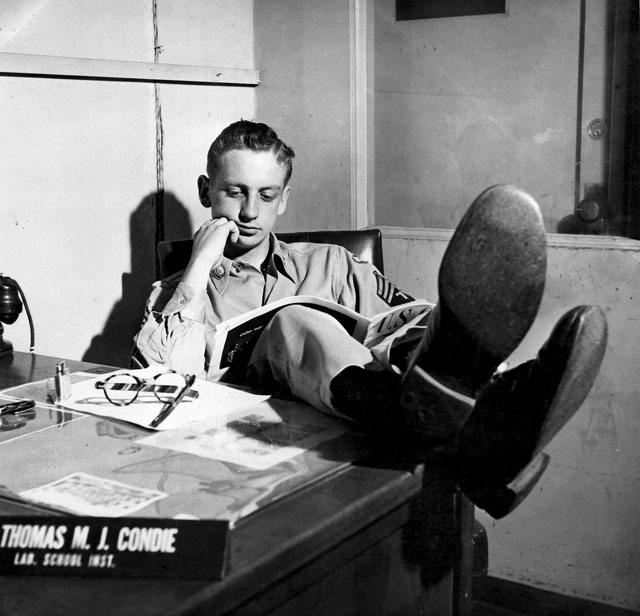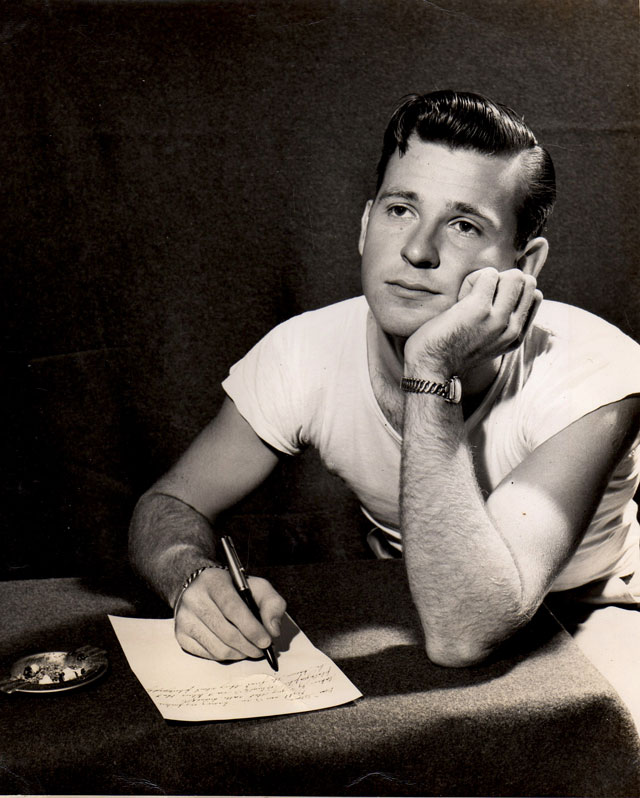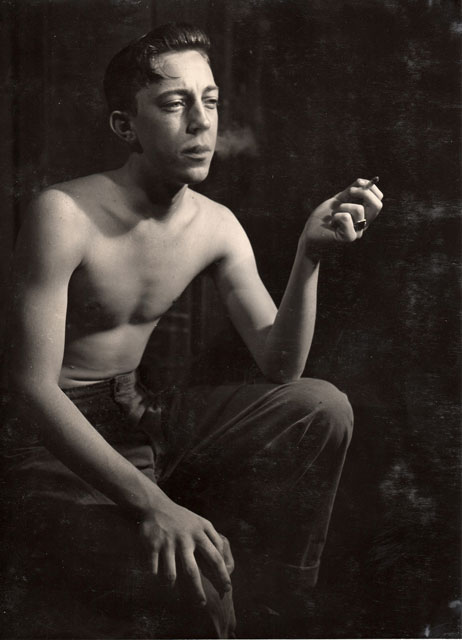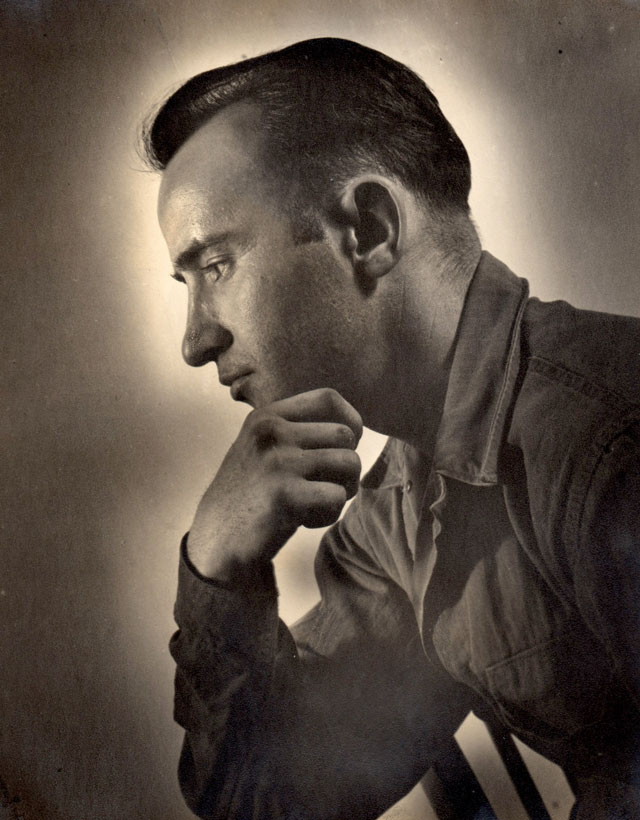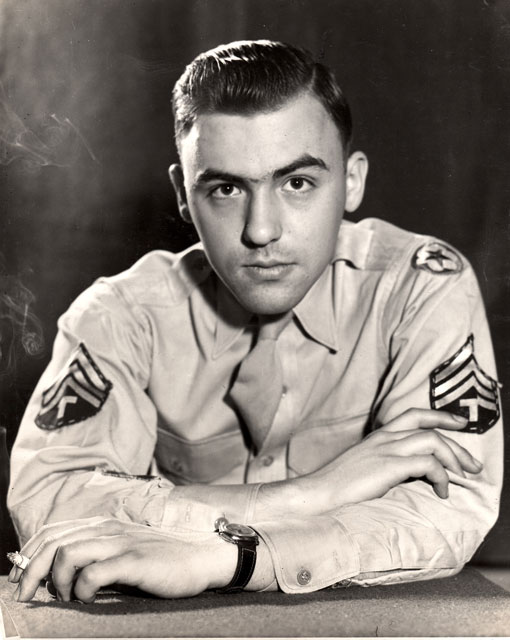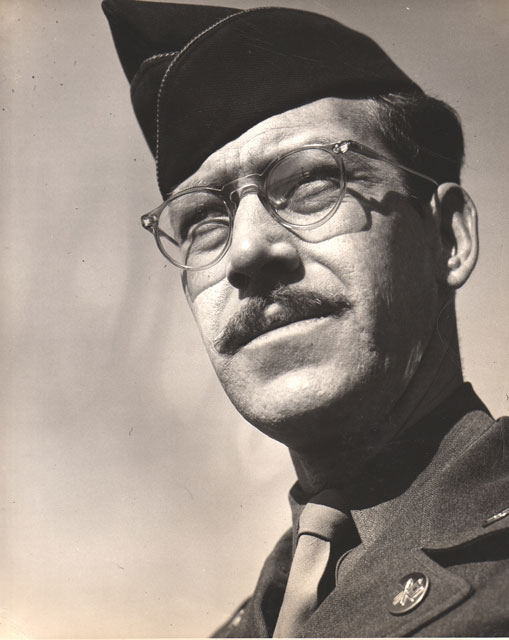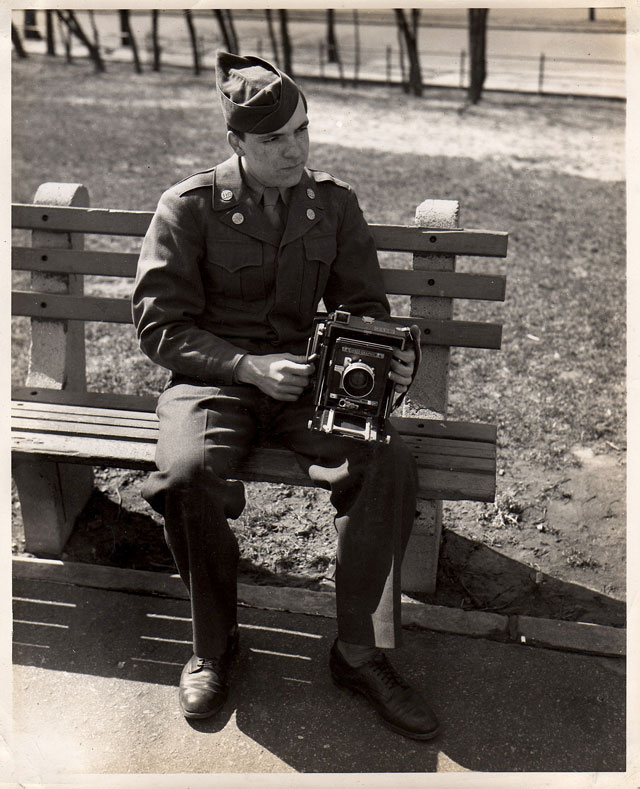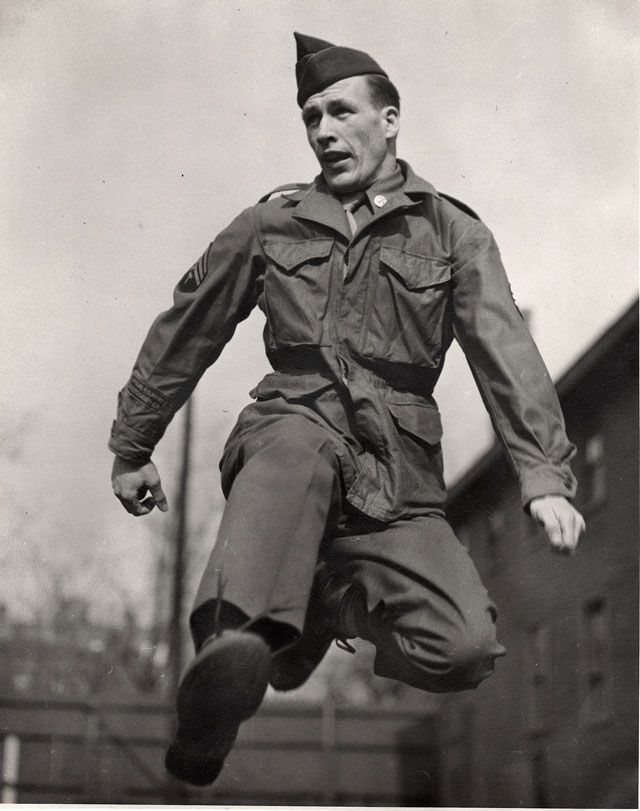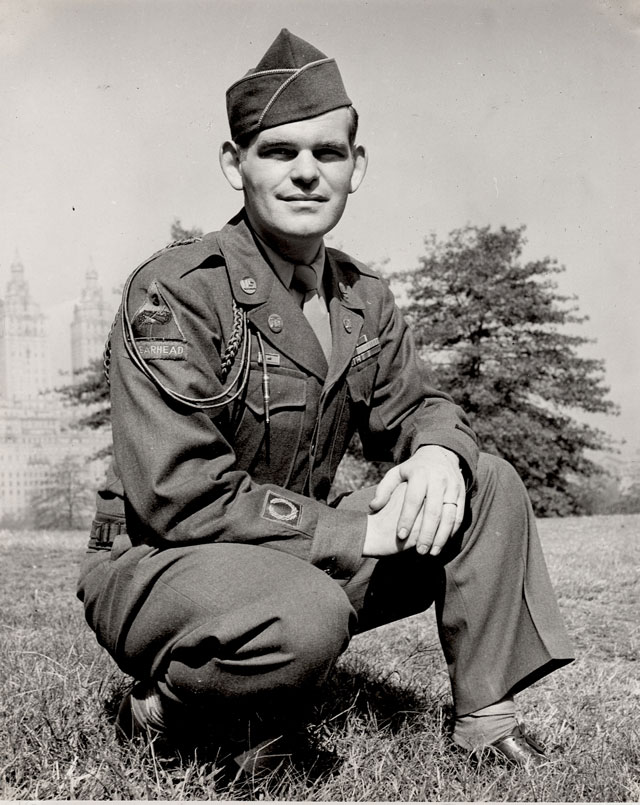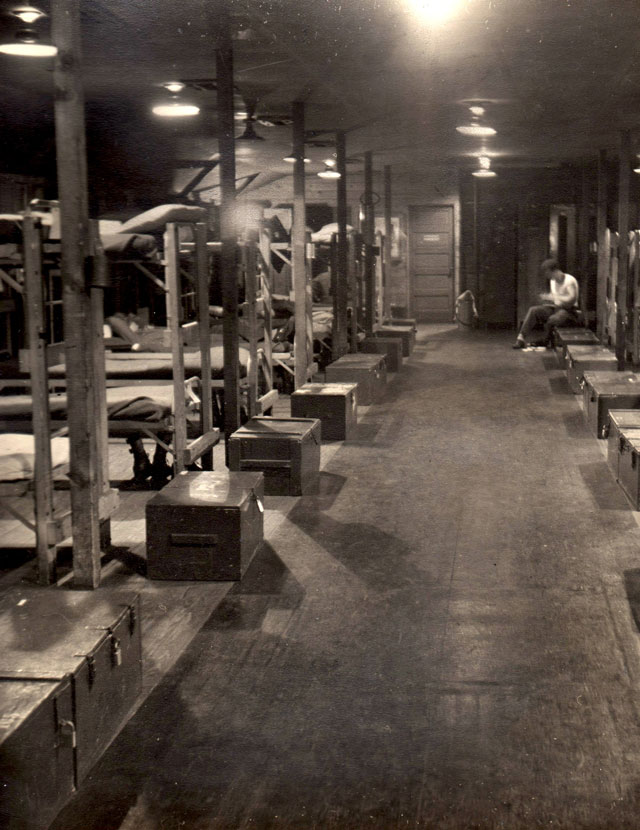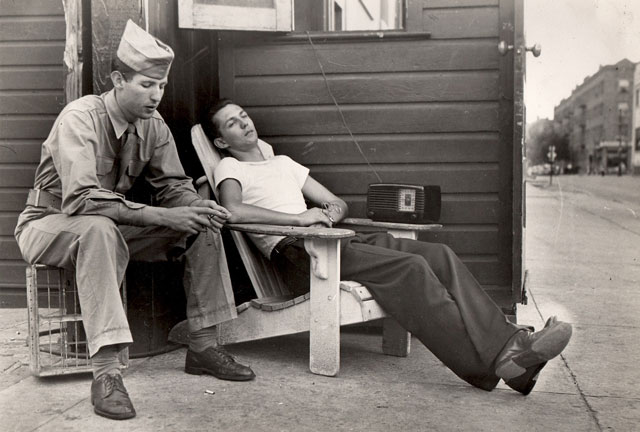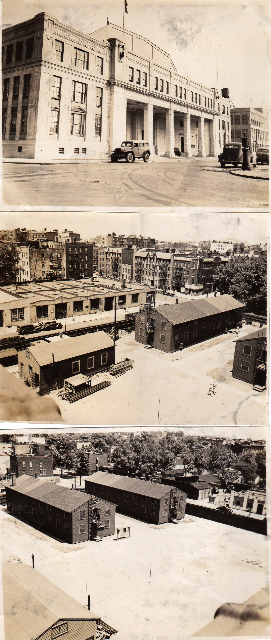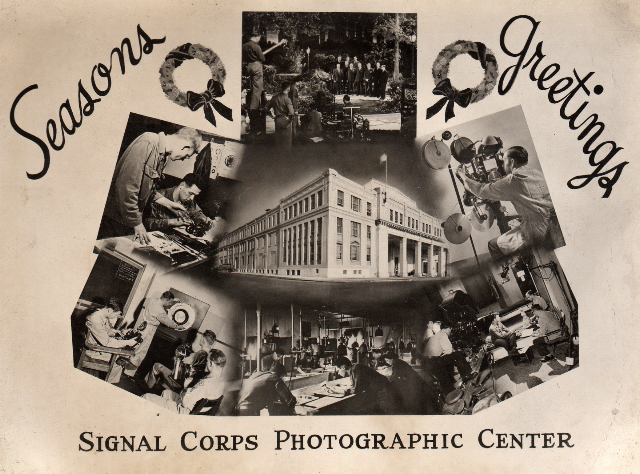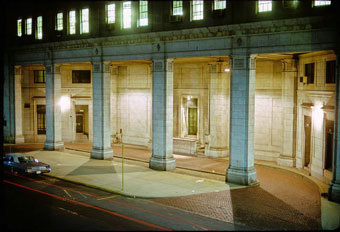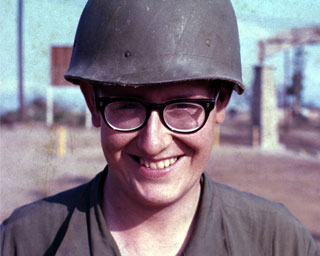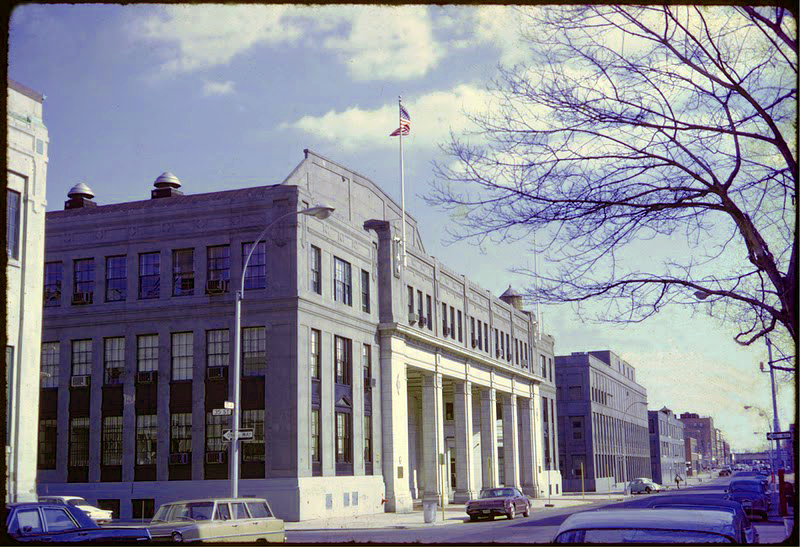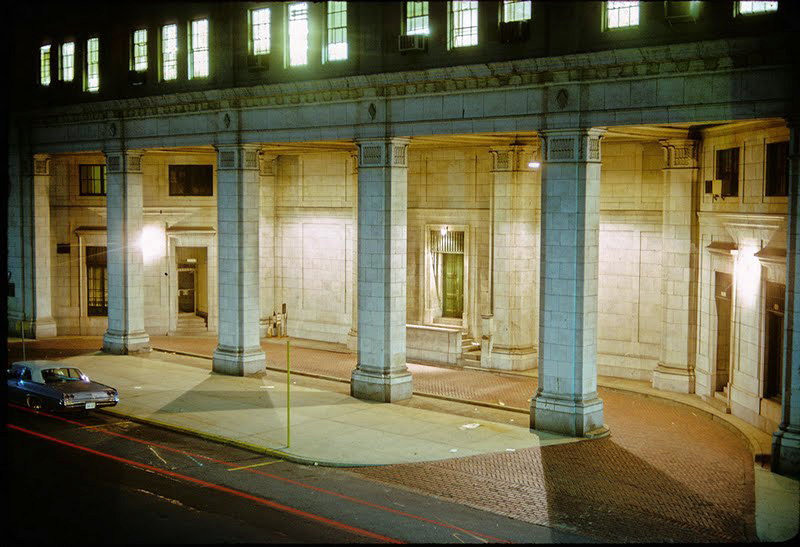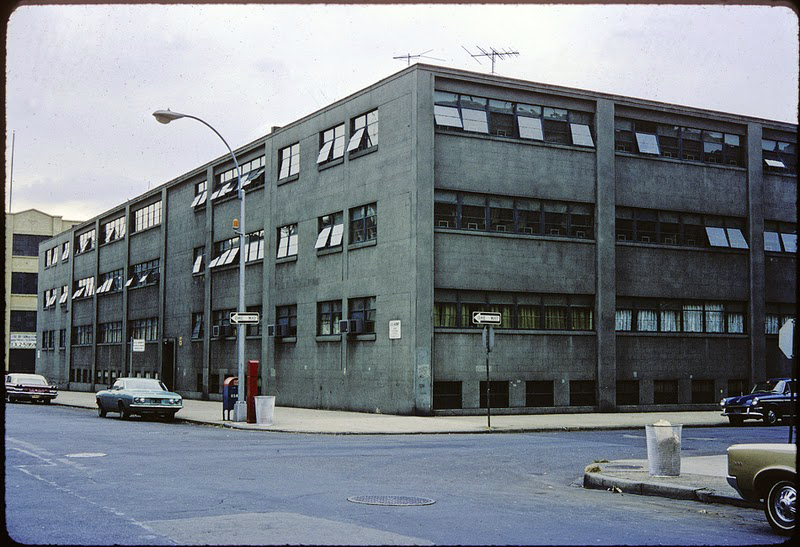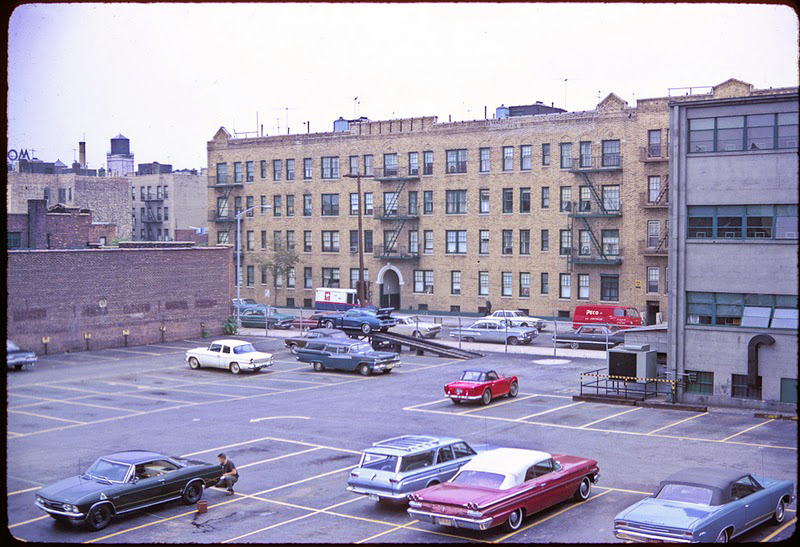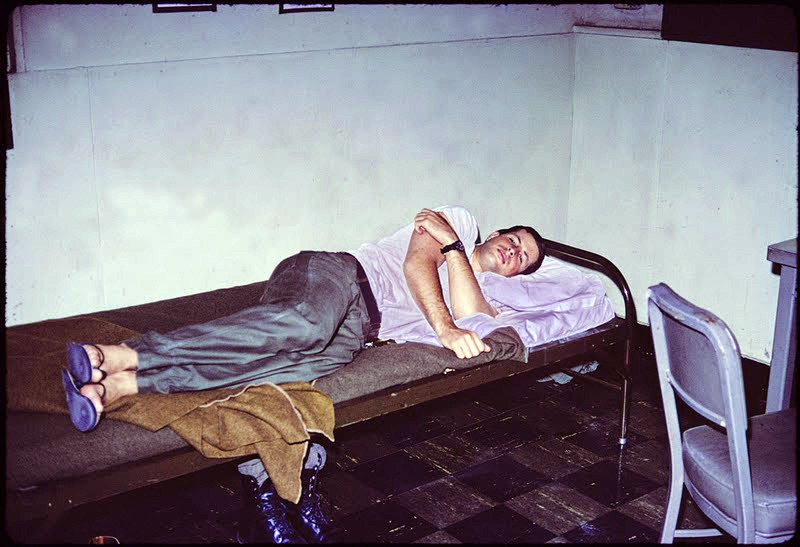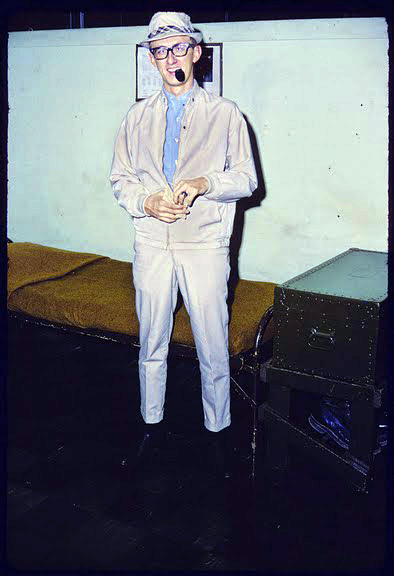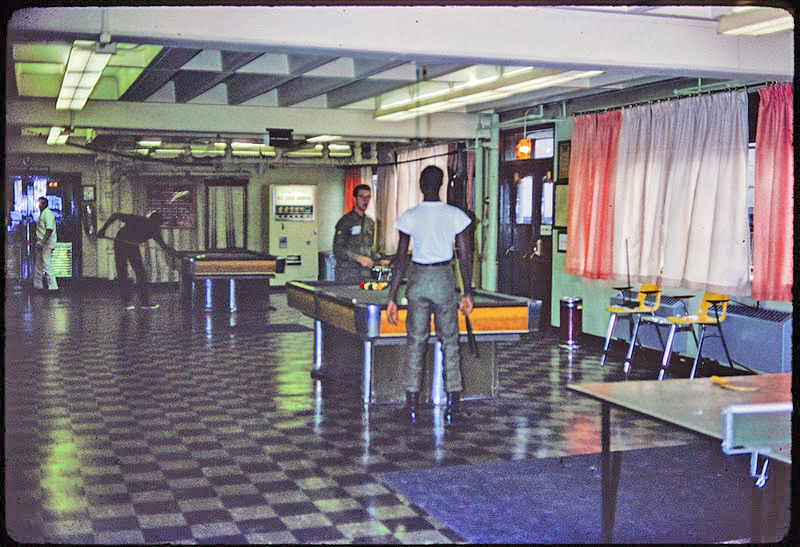 |
Bill Finger is an example of the colorful and talented people who passed through Army Pictorial Center over the years. Bill served as a contract writer circa 1969-1970. Bill is remembered among comic book afficianados and super-hero fans as the uncredited co-creator of Batman. Now, a writer is researching a project for which he is seeking information about and photos of Bill. If you have anything to share with writer Marc Tyler Nobleman, you can contact him at mtn@mtncartoons.com. Nobleman said he's "open to suggestions as to where else I might be able to find Bill photos, in particular a copy of his military-issued photo ID, or at least the photo." Bill Finger was an ascerbic character, always in a hurry in the hallway of Writers' Branch. When questioned about comic book artist Bob Kane's fame and fortune with the pop culture success of the 1960s television series "Batman," Bill would growl, "All those villains, the Joker, Penguin, I created 'em." In his other non-Army work, Bill is remembered as the screenwriter of 1968's cult sci-fi thriller "The Green Slime," a "lovely piece of b-cinema." (Nobleman's book, "Bill the Boy Wonder: The Secret Co-Creator of Batman," was published and is available at Amazon.com.) (Posted June 18, 2006, updated September 3, 2018.) |
 |
Bill Finger is an example of the colorful and talented people who passed through Army Pictorial Center over the years. Bill served as a contract writer circa 1969-1970. Bill is remembered among comic book afficianados and super-hero fans as the uncredited co-creator of Batman. Now, a writer is researching a project for which he is seeking information about and photos of Bill. If you have anything to share with writer Marc Tyler Nobleman, you can contact him at mtn@mtncartoons.com. Nobleman said he's "open to suggestions as to where else I might be able to find Bill photos, in particular a copy of his military-issued photo ID, or at least the photo." Bill Finger was an ascerbic character, always in a hurry in the hallway of Writers' Branch. When questioned about comic book artist Bob Kane's fame and fortune with the pop culture success of the 1960s television series "Batman," Bill would growl, "All those villains, the Joker, Penguin, I created 'em." In his other non-Army work, Bill is remembered as the screenwriter of 1968's cult sci-fi thriller "The Green Slime," a "lovely piece of b-cinema." (Nobleman's book, "Bill the Boy Wonder: The Secret Co-Creator of Batman," was published and is available at Amazon.com.) (Posted June 18, 2006, updated September 3, 2018.) |
 |
Bill Finger is an example of the colorful and talented people who passed through Army Pictorial Center over the years. Bill served as a contract writer circa 1969-1970. Bill is remembered among comic book afficianados and super-hero fans as the uncredited co-creator of Batman. Now, a writer is researching a project for which he is seeking information about and photos of Bill. If you have anything to share with writer Marc Tyler Nobleman, you can contact him at mtn@mtncartoons.com. Nobleman said he's "open to suggestions as to where else I might be able to find Bill photos, in particular a copy of his military-issued photo ID, or at least the photo." Bill Finger was an ascerbic character, always in a hurry in the hallway of Writers' Branch. When questioned about comic book artist Bob Kane's fame and fortune with the pop culture success of the 1960s television series "Batman," Bill would growl, "All those villains, the Joker, Penguin, I created 'em." In his other non-Army work, Bill is remembered as the screenwriter of 1968's cult sci-fi thriller "The Green Slime," a "lovely piece of b-cinema." (Nobleman's book, "Bill the Boy Wonder: The Secret Co-Creator of Batman," was published and is available at Amazon.com.) (Posted June 18, 2006, updated September 3, 2018.) |
 |
Bill Finger is an example of the colorful and talented people who passed through Army Pictorial Center over the years. Bill served as a contract writer circa 1969-1970. Bill is remembered among comic book afficianados and super-hero fans as the uncredited co-creator of Batman. Now, a writer is researching a project for which he is seeking information about and photos of Bill. If you have anything to share with writer Marc Tyler Nobleman, you can contact him at mtn@mtncartoons.com. Nobleman said he's "open to suggestions as to where else I might be able to find Bill photos, in particular a copy of his military-issued photo ID, or at least the photo." Bill Finger was an ascerbic character, always in a hurry in the hallway of Writers' Branch. When questioned about comic book artist Bob Kane's fame and fortune with the pop culture success of the 1960s television series "Batman," Bill would growl, "All those villains, the Joker, Penguin, I created 'em." In his other non-Army work, Bill is remembered as the screenwriter of 1968's cult sci-fi thriller "The Green Slime," a "lovely piece of b-cinema." (Nobleman's book, "Bill the Boy Wonder: The Secret Co-Creator of Batman," was published and is available at Amazon.com.) (Posted June 18, 2006, updated September 3, 2018.) |
 |
Bill Finger was an ascerbic character, always in a hurry in the hallway of Writers' Branch. When questioned about comic book artist Bob Kane's fame and fortune with the pop culture success of the 1960s television series "Batman," Bill would growl, "All those villains, the Joker, Penguin, I created 'em." In his other non-Army work, Bill is remembered as the screenwriter of 1968's cult sci-fi thriller "The Green Slime," a "lovely piece of b-cinema." (Nobleman's book, "Bill the Boy Wonder: The Secret Co-Creator of Batman," was published and is available at Amazon.com.) (Posted June 18, 2006, updated September 3, 2018.) |
 |
Bill Finger was an ascerbic character, always in a hurry in the hallway of Writers' Branch. When questioned about comic book artist Bob Kane's fame and fortune with the pop culture success of the 1960s television series "Batman," Bill would growl, "All those villains, the Joker, Penguin, I created 'em." In his other non-Army work, Bill is remembered as the screenwriter of 1968's cult sci-fi thriller "The Green Slime," a "lovely piece of b-cinema." (Nobleman's book, "Bill the Boy Wonder: The Secret Co-Creator of Batman," was published and is available at Amazon.com.) (Posted June 18, 2006, updated September 3, 2018.) |
 |
Bill Finger was an ascerbic character, always in a hurry in the hallway of Writers' Branch. When questioned about comic book artist Bob Kane's fame and fortune with the pop culture success of the 1960s television series "Batman," Bill would growl, "All those villains, the Joker, Penguin, I created 'em." In his other non-Army work, Bill is remembered as the screenwriter of 1968's cult sci-fi thriller "The Green Slime," a "lovely piece of b-cinema." (Nobleman's book, "Bill the Boy Wonder: The Secret Co-Creator of Batman," was published and is available at Amazon.com.) (Posted June 18, 2006, updated September 3, 2018.) |
 |
Bill Finger was an ascerbic character, always in a hurry in the hallway of Writers' Branch. When questioned about comic book artist Bob Kane's fame and fortune with the pop culture success of the 1960s television series "Batman," Bill would growl, "All those villains, the Joker, Penguin, I created 'em." In his other non-Army work, Bill is remembered as the screenwriter of 1968's cult sci-fi thriller "The Green Slime," a "lovely piece of b-cinema." (Posted June 18, 2006, updated September 3, 2018.) |
 |
|
George M. Kotuby
Names also appearing on this page:
George M. Kotuby wrote, "I was stationed at SCPC from December 1946 until October 1948 when all the photo schools were moved to Ft Monmouth. I started as a student, pulled from class about three weeks before completion and sent to Ansco Corporation in Binghampton, NY, with three others. We were to be trained in the new Ansco color process. I returned to SCPC to set up the first darkroom color processing course and became the Senior Instructor in the Darkroom Technician's School. I was a Staff Sgt and my serial number was RA 12246876. I have a photo album of my time there with pictures of the facilities and the students, etc. If there is some museum like spot for items like this, please let me know as I would donate the album there. Thanks.
George M.
Kotuby:
"This one is of me with the standard
GI issue 4 X 5 Speed Graphic.
Each Darkroom Technician's Class would pose for a "Class Picture" as they approached the end of their training. This is Class D-53; photo taken in late 1947. Note that this is the first class with WACS - at least while I was there. (I had a few more after we moved the school to Ft Monmouth.)
The photos above and below are views of the entire compliment of SCPC Standing and awaiting for the annual AG inspection. The company was supposed to line up in front of the barracks thus being in the sunlight and easier to photograph. However, it was so hot in this August of 1948 that they were placed in the shade. In front of the formation is Lt. Thomas and First Sergeant Percy Ricks.
(Percy Ricks remained with the studio until it closed in 1970, serving in later years as a civilian production specialist with the Laboratory Branch.) I believe he was one of the early black first sergeants of a company. (Our barracks were also one of the early integrated ones.) I think I remember that one or more of his brothers were members of a top recording singing group of the day. In the top photo, the arrow is pointing to the officers doing the inspection. The bottom photo is the completion of the inspection and the final salute.
"This is class D-49, my first as an instructor," wrote Kotuby. "I started it with Mike Chopko, my instructor, who left after a couple of weeks to start another class and then prepare for discharge. We had a cariticurist in the class, Dick West, who did the 'funnies' for the group."
"This is of Terry Beam who was the school clerk. He apparently mentioned to Lt Buck that he was going to take some snaps to send home. Lt. Buck asked me to take them for him with this result."
"This is a shot of my very good friend, T-4 Thomas M J Condie, taking a break after finishing a tough class. Tom was also sent to Ansco about a year after I went and, together, we formalized the School Lesson Plans. Tom went on to be a very successful commercial photographer (he did Harley Davidson ads for years {until they got really big time} as well as Westinghouse Refrigerators, Lillian Vernon catalogs and many others). Sadly, Tom died two years ago."
This is Al Flynn.
"This is of Private Paul Heiderman, cadre (motor pool, I think). He just got off KP and sat on the foot locker I was using for some portraits. 1948."
"This is another shot of Scotty Alexander taken in early 1947. It was part of an early assignment on indoor portraiture."
Technical Sergeant Walter Klink was an instructor in the Darkroom Technician's School, circa 1946-1948. This photo was supplied by fellow instructor George M. Kotuby, who wrote, "This is of fellow instructor and friend, Walter Klink of Pennsylvania. Last contact - he was studying journalism at Columbia, 1948."
"This photo is of G. Royce McGowan. He was one of my students in Class D-60. He was pulled in the last couple of weeks to become an Assistant Director on the big sound stage on a film they were making. 'Taken' in 1947."
"This is of Al Werner, a classmate of mine, taken in 1947 near the Tri-Borough Bridge. Our instructor, Mike Chopko wouldn't allow us to use exposure meters. We were to calculate the exposure based on our lessons."
"This photo is of T-4 Cecil Riley, an instructor in the Still Picture School. He was very good; was even denied an apprenticeship with a top notch photographer because he had more knowledge than the photog. Picture taken in 1947."
"This photo is of Pvt Lowell Storms, first one of my students and later an assistant. Taken in 1947."
Barracks interior, 1947.
"Because it was the Army, we had to have a Guard Shack and pull guard duty. As you can see from this, it was very informal. Pvt Roy Haefner was on Guard Duty so I brought my radio out and kept him company."
George supplied these three photos: "I believe they all are from 1947. The top shot is of the main building; the middle one shows the orderly room and barracks T-3; the bottom is of barracks T-4 & T-5. Four squads of up to 12 in each barracks together with special cadre rooms. Seldom had 48 in any of the barracks. They were heated with little pot-bellied stoves."
George also supplied this holiday greeting card, circa 1947.
George M. Kotuby, PO Box 780 Bailey Island, ME 04003 (207) 833-7789
(Updated September 3, 2018.)
|
 |
|
George M. Kotuby
Names also appearing on this page:
George M. Kotuby wrote, "I was stationed at SCPC from December 1946 until October 1948 when all the photo schools were moved to Ft Monmouth. I started as a student, pulled from class about three weeks before completion and sent to Ansco Corporation in Binghampton, NY, with three others. We were to be trained in the new Ansco color process. I returned to SCPC to set up the first darkroom color processing course and became the Senior Instructor in the Darkroom Technician's School. I was a Staff Sgt and my serial number was RA 12246876. I have a photo album of my time there with pictures of the facilities and the students, etc. If there is some museum like spot for items like this, please let me know as I would donate the album there. Thanks.
George M.
Kotuby:
"This one is of me with the standard
GI issue 4 X 5 Speed Graphic.
Each Darkroom Technician's Class would pose for a "Class Picture" as they approached the end of their training. This is Class D-53; photo taken in late 1947. Note that this is the first class with WACS - at least while I was there. (I had a few more after we moved the school to Ft Monmouth.)
The photos above and below are views of the entire compliment of SCPC Standing and awaiting for the annual AG inspection. The company was supposed to line up in front of the barracks thus being in the sunlight and easier to photograph. However, it was so hot in this August of 1948 that they were placed in the shade. In front of the formation is Lt. Thomas and First Sergeant Percy Ricks.
(Percy Ricks remained with the studio until it closed in 1970, serving in later years as a civilian production specialist with the Laboratory Branch.) I believe he was one of the early black first sergeants of a company. (Our barracks were also one of the early integrated ones.) I think I remember that one or more of his brothers were members of a top recording singing group of the day. In the top photo, the arrow is pointing to the officers doing the inspection. The bottom photo is the completion of the inspection and the final salute.
"This is class D-49, my first as an instructor," wrote Kotuby. "I started it with Mike Chopko, my instructor, who left after a couple of weeks to start another class and then prepare for discharge. We had a cariticurist in the class, Dick West, who did the 'funnies' for the group."
"This is of Terry Beam who was the school clerk. He apparently mentioned to Lt Buck that he was going to take some snaps to send home. Lt. Buck asked me to take them for him with this result."
"This is a shot of my very good friend, T-4 Thomas M J Condie, taking a break after finishing a tough class. Tom was also sent to Ansco about a year after I went and, together, we formalized the School Lesson Plans. Tom went on to be a very successful commercial photographer (he did Harley Davidson ads for years {until they got really big time} as well as Westinghouse Refrigerators, Lillian Vernon catalogs and many others). Sadly, Tom died two years ago."
This is Al Flynn.
"This is of Private Paul Heiderman, cadre (motor pool, I think). He just got off KP and sat on the foot locker I was using for some portraits. 1948."
"This is another shot of Scotty Alexander taken in early 1947. It was part of an early assignment on indoor portraiture."
Technical Sergeant Walter Klink was an instructor in the Darkroom Technician's School, circa 1946-1948. This photo was supplied by fellow instructor George M. Kotuby, who wrote, "This is of fellow instructor and friend, Walter Klink of Pennsylvania. Last contact - he was studying journalism at Columbia, 1948."
"This photo is of G. Royce McGowan. He was one of my students in Class D-60. He was pulled in the last couple of weeks to become an Assistant Director on the big sound stage on a film they were making. 'Taken' in 1947."
"This is of Al Werner, a classmate of mine, taken in 1947 near the Tri-Borough Bridge. Our instructor, Mike Chopko wouldn't allow us to use exposure meters. We were to calculate the exposure based on our lessons."
"This photo is of T-4 Cecil Riley, an instructor in the Still Picture School. He was very good; was even denied an apprenticeship with a top notch photographer because he had more knowledge than the photog. Picture taken in 1947."
"This photo is of Pvt Lowell Storms, first one of my students and later an assistant. Taken in 1947."
Barracks interior, 1947.
"Because it was the Army, we had to have a Guard Shack and pull guard duty. As you can see from this, it was very informal. Pvt Roy Haefner was on Guard Duty so I brought my radio out and kept him company."
George supplied these three photos: "I believe they all are from 1947. The top shot is of the main building; the middle one shows the orderly room and barracks T-3; the bottom is of barracks T-4 & T-5. Four squads of up to 12 in each barracks together with special cadre rooms. Seldom had 48 in any of the barracks. They were heated with little pot-bellied stoves."
George also supplied this holiday greeting card, circa 1947.
George M. Kotuby, PO Box 780 Bailey Island, ME 04003 (207) 833-7789
(Updated September 3, 2018.)
|
|
|
|
Bill Ricks Bill Ricks [w.a.ricks@gmail.com] wrote: I dug out an old picture album, and I have a 5x7 b&W print of the studio building showing four cars in front. Window air conditioners at the third floor.
Scroll down to see Bill Ricks' collection of 1967 photos of APC.
Like many of the soldiers who served at APC, Ricks also had his overseas' tour. He sent this photo from his time in Vietnam:
(Posted August 14, 2006; updated August 5, 2018.) |
|
William A. (Bill) Ricks provided these 1967 views from his collection of color slides:
A view of the main studio. My main work area was at one of the visible windows at left. I think it was second floor. We maintained and checked out cameras and other equipment. Also we worked with photographic instrumentation. I recall cannibalizing electronic assemblies.
Front of APC main studio at night, from barracks building window. That center entry opens directly onto the main stage.
APC barracks building across the street from the studio. I bunked at the far end, third floor. A TV room and food/beverage area was in the basement.
Parking lot behind the barracks. The back door of the mess hall opened on the parking lot, but this is a higher view.
I'm sorry, I can't remember the name. This was typical view of the barracks.
My friend Jim Walch, who worked in personnel. He was able to maneuver the timing of my 30-day leave. It resulted in my landing in Vietnam as Tet was winding up instead of being in the middle of it.
Game room. One of the career soldiers would walk in the room in a booming voice, saying "Piece of the action. Best in the house."
(Posted November 3, 2010; updated August 5, 2018.) |
|
|
|
Bill Ricks Bill Ricks [w.a.ricks@gmail.com] wrote: I dug out an old picture album, and I have a 5x7 b&W print of the studio building showing four cars in front. Window air conditioners at the third floor.
Scroll down to see Bill Ricks' collection of 1967 photos of APC.
Like many of the soldiers who served at APC, Ricks also had his overseas' tour. He sent this photo from his time in Vietnam:
(Posted August 14, 2006; updated August 5, 2018.) |
|
William A. (Bill) Ricks provided these 1967 views from his collection of color slides:
A view of the main studio. My main work area was at one of the visible windows at left. I think it was second floor. We maintained and checked out cameras and other equipment. Also we worked with photographic instrumentation. I recall cannibalizing electronic assemblies.
Front of APC main studio at night, from barracks building window. That center entry opens directly onto the main stage.
APC barracks building across the street from the studio. I bunked at the far end, third floor. A TV room and food/beverage area was in the basement.
Parking lot behind the barracks. The back door of the mess hall opened on the parking lot, but this is a higher view.
I'm sorry, I can't remember the name. This was typical view of the barracks.
My friend Jim Walch, who worked in personnel. He was able to maneuver the timing of my 30-day leave. It resulted in my landing in Vietnam as Tet was winding up instead of being in the middle of it.
Game room. One of the career soldiers would walk in the room in a booming voice, saying "Piece of the action. Best in the house."
(Posted November 3, 2010; updated August 5, 2018.) |
|
|
|
Bill Ricks Bill Ricks [w.a.ricks@gmail.com] wrote: I dug out an old picture album, and I have a 5x7 b&W print of the studio building showing four cars in front. Window air conditioners at the third floor.
Scroll down to see Bill Ricks' collection of 1967 photos of APC.
Like many of the soldiers who served at APC, Ricks also had his overseas' tour. He sent this photo from his time in Vietnam:
(Posted August 14, 2006; updated August 5, 2018.) |
|
William A. (Bill) Ricks provided these 1967 views from his collection of color slides:
A view of the main studio. My main work area was at one of the visible windows at left. I think it was second floor. We maintained and checked out cameras and other equipment. Also we worked with photographic instrumentation. I recall cannibalizing electronic assemblies.
Front of APC main studio at night, from barracks building window. That center entry opens directly onto the main stage.
APC barracks building across the street from the studio. I bunked at the far end, third floor. A TV room and food/beverage area was in the basement.
Parking lot behind the barracks. The back door of the mess hall opened on the parking lot, but this is a higher view.
I'm sorry, I can't remember the name. This was typical view of the barracks.
My friend Jim Walch, who worked in personnel. He was able to maneuver the timing of my 30-day leave. It resulted in my landing in Vietnam as Tet was winding up instead of being in the middle of it.
Game room. One of the career soldiers would walk in the room in a booming voice, saying "Piece of the action. Best in the house."
(Posted November 3, 2010; updated August 5, 2018.) |
|
|
|
Bill Ricks Bill Ricks [w.a.ricks@gmail.com] wrote: I dug out an old picture album, and I have a 5x7 b&W print of the studio building showing four cars in front. Window air conditioners at the third floor.
Scroll down to see Bill Ricks' collection of 1967 photos of APC.
Like many of the soldiers who served at APC, Ricks also had his overseas' tour. He sent this photo from his time in Vietnam:
(Posted August 14, 2006; updated August 5, 2018.) |
|
William A. (Bill) Ricks provided these 1967 views from his collection of color slides:
A view of the main studio. My main work area was at one of the visible windows at left. I think it was second floor. We maintained and checked out cameras and other equipment. Also we worked with photographic instrumentation. I recall cannibalizing electronic assemblies.
Front of APC main studio at night, from barracks building window. That center entry opens directly onto the main stage.
APC barracks building across the street from the studio. I bunked at the far end, third floor. A TV room and food/beverage area was in the basement.
Parking lot behind the barracks. The back door of the mess hall opened on the parking lot, but this is a higher view.
I'm sorry, I can't remember the name. This was typical view of the barracks.
My friend Jim Walch, who worked in personnel. He was able to maneuver the timing of my 30-day leave. It resulted in my landing in Vietnam as Tet was winding up instead of being in the middle of it.
Game room. One of the career soldiers would walk in the room in a booming voice, saying "Piece of the action. Best in the house."
(Posted November 3, 2010; updated August 5, 2018.) |
|
|
|
Bill Ricks Bill Ricks [w.a.ricks@gmail.com] wrote: I dug out an old picture album, and I have a 5x7 b&W print of the studio building showing four cars in front. Window air conditioners at the third floor.
Scroll down to see Bill Ricks' collection of 1967 photos of APC.
Like many of the soldiers who served at APC, Ricks also had his overseas' tour. He sent this photo from his time in Vietnam:
(Posted August 14, 2006; updated August 5, 2018.) |
|
William A. (Bill) Ricks provided these 1967 views from his collection of color slides:
A view of the main studio. My main work area was at one of the visible windows at left. I think it was second floor. We maintained and checked out cameras and other equipment. Also we worked with photographic instrumentation. I recall cannibalizing electronic assemblies.
Front of APC main studio at night, from barracks building window. That center entry opens directly onto the main stage.
APC barracks building across the street from the studio. I bunked at the far end, third floor. A TV room and food/beverage area was in the basement.
Parking lot behind the barracks. The back door of the mess hall opened on the parking lot, but this is a higher view.
I'm sorry, I can't remember the name. This was typical view of the barracks.
My friend Jim Walch, who worked in personnel. He was able to maneuver the timing of my 30-day leave. It resulted in my landing in Vietnam as Tet was winding up instead of being in the middle of it.
Game room. One of the career soldiers would walk in the room in a booming voice, saying "Piece of the action. Best in the house."
(Posted November 3, 2010; updated August 5, 2018.) |
|
|
|
Bill Ricks Bill Ricks [w.a.ricks@gmail.com] wrote: I dug out an old picture album, and I have a 5x7 b&W print of the studio building showing four cars in front. Window air conditioners at the third floor.
Scroll down to see Bill Ricks' collection of 1967 photos of APC.
Like many of the soldiers who served at APC, Ricks also had his overseas' tour. He sent this photo from his time in Vietnam:
(Posted August 14, 2006; updated August 5, 2018.) |
|
William A. (Bill) Ricks provided these 1967 views from his collection of color slides:
A view of the main studio. My main work area was at one of the visible windows at left. I think it was second floor. We maintained and checked out cameras and other equipment. Also we worked with photographic instrumentation. I recall cannibalizing electronic assemblies.
Front of APC main studio at night, from barracks building window. That center entry opens directly onto the main stage.
APC barracks building across the street from the studio. I bunked at the far end, third floor. A TV room and food/beverage area was in the basement.
Parking lot behind the barracks. The back door of the mess hall opened on the parking lot, but this is a higher view.
I'm sorry, I can't remember the name. This was typical view of the barracks.
My friend Jim Walch, who worked in personnel. He was able to maneuver the timing of my 30-day leave. It resulted in my landing in Vietnam as Tet was winding up instead of being in the middle of it.
Game room. One of the career soldiers would walk in the room in a booming voice, saying "Piece of the action. Best in the house."
(Posted November 3, 2010; updated August 5, 2018.) |
|
|
|
Bill Ricks Bill Ricks [w.a.ricks@gmail.com] wrote: I dug out an old picture album, and I have a 5x7 b&W print of the studio building showing four cars in front. Window air conditioners at the third floor.
Scroll down to see Bill Ricks' collection of 1967 photos of APC.
Like many of the soldiers who served at APC, Ricks also had his overseas' tour. He sent this photo from his time in Vietnam:
(Posted August 14, 2006; updated August 5, 2018.) |
|
William A. (Bill) Ricks provided these 1967 views from his collection of color slides:
A view of the main studio. My main work area was at one of the visible windows at left. I think it was second floor. We maintained and checked out cameras and other equipment. Also we worked with photographic instrumentation. I recall cannibalizing electronic assemblies.
Front of APC main studio at night, from barracks building window. That center entry opens directly onto the main stage.
APC barracks building across the street from the studio. I bunked at the far end, third floor. A TV room and food/beverage area was in the basement.
Parking lot behind the barracks. The back door of the mess hall opened on the parking lot, but this is a higher view.
I'm sorry, I can't remember the name. This was typical view of the barracks.
My friend Jim Walch, who worked in personnel. He was able to maneuver the timing of my 30-day leave. It resulted in my landing in Vietnam as Tet was winding up instead of being in the middle of it.
Game room. One of the career soldiers would walk in the room in a booming voice, saying "Piece of the action. Best in the house."
(Posted November 3, 2010; updated August 5, 2018.) |
|
|
|
Bill Ricks Bill Ricks [w.a.ricks@gmail.com] wrote: I dug out an old picture album, and I have a 5x7 b&W print of the studio building showing four cars in front. Window air conditioners at the third floor.
Scroll down to see Bill Ricks' collection of 1967 photos of APC.
Like many of the soldiers who served at APC, Ricks also had his overseas' tour. He sent this photo from his time in Vietnam:
(Posted August 14, 2006; updated August 5, 2018.) |
|
William A. (Bill) Ricks provided these 1967 views from his collection of color slides:
A view of the main studio. My main work area was at one of the visible windows at left. I think it was second floor. We maintained and checked out cameras and other equipment. Also we worked with photographic instrumentation. I recall cannibalizing electronic assemblies.
Front of APC main studio at night, from barracks building window. That center entry opens directly onto the main stage.
APC barracks building across the street from the studio. I bunked at the far end, third floor. A TV room and food/beverage area was in the basement.
Parking lot behind the barracks. The back door of the mess hall opened on the parking lot, but this is a higher view.
I'm sorry, I can't remember the name. This was typical view of the barracks.
My friend Jim Walch, who worked in personnel. He was able to maneuver the timing of my 30-day leave. It resulted in my landing in Vietnam as Tet was winding up instead of being in the middle of it.
Game room. One of the career soldiers would walk in the room in a booming voice, saying "Piece of the action. Best in the house."
(Posted November 3, 2010; updated August 5, 2018.) |
